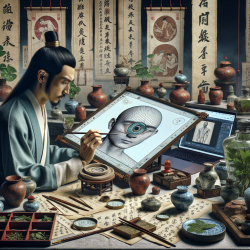Unveiling the Mysteries of Forensic Medicine in Imperial China
In the realm of forensic medicine, history often provides a treasure trove of insights that can enhance modern practices. One such fascinating exploration is found in the research article, "The Chinese Nail Murders: forensic medicine in Imperial China," by W.C. Summers. This article delves into the intricate forensic techniques used during the Tang dynasty, a period that offers valuable lessons for today's practitioners.
The Historical Context
Robert van Gulik, a renowned Dutch sinologist, translated traditional Chinese detective stories, including "The Chinese Nail Murders," into English. These stories, set in the Tang dynasty, highlight the challenges faced by examining magistrates in detecting murder by a nail wound to the head. The postmortem examinations during this era were primarily limited to external observations, making the detection of such subtle violence particularly challenging.
Lessons for Modern Practitioners
While the forensic techniques of Imperial China may seem antiquated, they offer valuable insights for modern practitioners, particularly those in therapeutic and educational settings. Here are some key takeaways:
- Attention to Detail: The meticulous nature of ancient forensic examinations underscores the importance of thoroughness in assessments. Practitioners should cultivate a keen eye for detail, ensuring that no subtle signs are overlooked.
- Holistic Observation: Although limited to external observations, ancient forensic methods emphasized a holistic approach. Modern practitioners can benefit from considering all aspects of a child's environment and behavior when evaluating their needs.
- Interdisciplinary Collaboration: The integration of law, medicine, and detective work in these stories highlights the value of interdisciplinary collaboration. Practitioners can enhance outcomes by working closely with educators, parents, and other professionals.
Encouraging Further Research
The exploration of forensic medicine in Imperial China is not only a fascinating historical study but also a call to action for practitioners to engage in further research. By delving into the roots of forensic practices, professionals can uncover innovative strategies that can be applied to modern therapeutic settings.
Practitioners are encouraged to explore the following areas:
- Historical Comparisons: Investigate how ancient methods compare to modern practices and identify potential areas for improvement.
- Cultural Insights: Consider how cultural perspectives on medicine and law can inform current therapeutic approaches.
- Case Studies: Develop case studies that integrate historical forensic techniques with contemporary therapeutic strategies.
Conclusion
The intersection of history and modern practice offers a rich field of study that can enhance the skills of practitioners. By embracing the lessons of forensic medicine from Imperial China, professionals can improve their observational skills, foster interdisciplinary collaboration, and ultimately create better outcomes for children.
To read the original research paper, please follow this link: The Chinese Nail Murders: forensic medicine in Imperial China.










